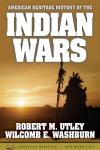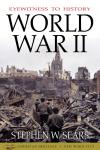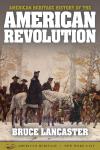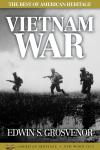Featured Essays
Recent rehabilitation of this important site at the Gettysburg battlefield provides a much improved experience for visitors.
A Chinatown cook's fight to re-enter the U.S. in 1895 went up to the Supreme Court, which upheld his claim to birthright citizenship and guaranteed it for all through the 14th Amendment.
Dickinson played a pivotal role in our Nation’s founding, from the Stamp Act to ratifying the Constitution, but his contributions are largely forgotten by history.
Some delegates at the Constitutional Convention wanted a strong executive, while others feared the American president might become a king.
America 250!
"The Sparck of Rebellion" | Winter 2010, Summer 2025, Vol 59, No 4
By Douglas BrinkleyBadly disguised as Indians, a rowdy group of patriotic vandals kicked a revolution into motion.
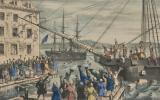
The Shots Heard Round the World | Spring 2025, Vol 70, No 2
By John FerlingWhat began as a civil war within the British Empire continued until it became a wider conflict affecting peoples and countries across Europe and North America.

Big Guns For Washington | April 1955, Vol 6, No 3
By Clay PerryHow tough Henry Knox hauled a train of cannon over wintry trails to help drive the British away from Boston

John Dickinson: Forgotten Founder | Fall 2025, Vol 70, No 4
By Jane E. CalvertDickinson played a pivotal role in our Nation’s founding, from the Stamp Act to ratifying the Constitution, but his contributions are largely forgotten by history.

Drama at the Old North Bridge | Spring 2025, Vol 70, No 2
By Rick Atkinson“Now the war has begun and no one knows when it will end,” said one minuteman after the fight.

Classic Essays from the Archives
Did Sally Hemings and Thomas Jefferson Love Each Other? | Fall 2008, Summer 2025, Vol 58, No 5
By Annette Gordon-ReedTo call it a loaded question does not begin to do justice to the matter, given America’s tortured racial history and its haunting legacy.

Herbert Hoover Describes the Ordeal of Woodrow Wilson | June 1958, Vol 9, No 4
By Herbert HooverThe great tragedy of the twenty-eighth President as witnessed by his loyal lieutenant, the thirty-first.
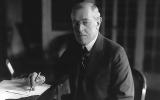
Finding the Real Jamestown | Winter 2008, Summer 2025, Vol 70, No 3
By William M. KelsoThe archaeologist who discovered the real Jamestown debunks myths, and answers age-old mysteries about North America's first successful English colony.








